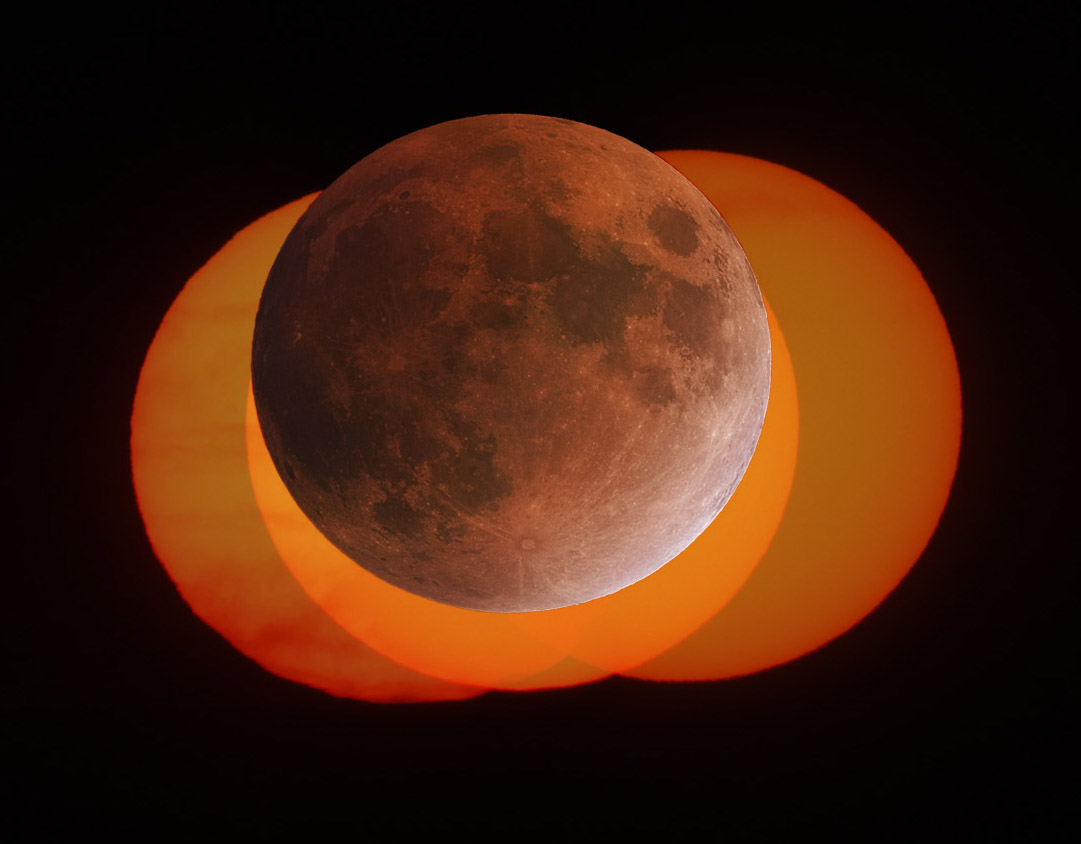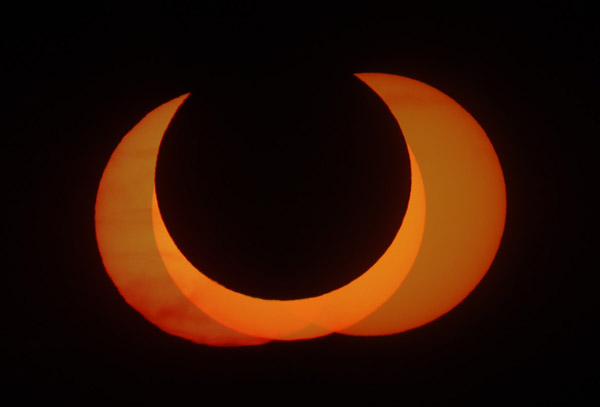June 25, 2020
Three Suns And Two Moons
Originally published January 11, 2011

solar images and composite by Peter Rosén, Stockholm, Sweden, and lunar eclipse image by Johannes Schedler
During the recent partial solar eclipse I made a composite of 3 shots (see below) taken through a telescope that together made up the outline of the new Moon. I wondered if it would be possible to find a picture of the full moon that would perfectly match the hole so I downloaded libration tables for every day since 2005 and found that on the 21st of february 2008 the Moon had a very similar libration. And to my big astonishment I remembered that there was a beautiful eclipse of the Moon on that very day! I turned to a friend who is very knowlegeable about the Moon's motion to understand if this was an extreme coincidence or part of a cycle. Well his explanations were a little beyond my understanding but in conclusion it seems to be the latter. To match 2 opposite eclipses, one of the sun and one of the moon while maintaining the same libration, a period of approximately 3 years is required.
I then had to find a picture of the eclipsed moon of the 21st of February 2008. As it was widely photographed (but not by me) I remembered having seen a beautiful shot on Johannes Schedler's site. He gave me permission to use his picture in my composition. So I have now completed the missing face of the Moon by using an eclipsed Moon from 3 years ago, thus producing a double eclipse, only possible in the digital world.
Peter Rosén

Technical Details
Solar images: The eclipse of the sun started before sunrise but the sun did not emerge from behind the clouds until 8h16 UT. The 3 composited pictures of the eclipse make up a portrait of the transiting moon. Not much is missing. The first picture was taken at 8h23' UT, the second shows the crescent at the maximum of 85% at 8h41', just a little bellow the theoretical maximum of 86% visible in the north of Sweden. The 3rd picture was taken at 9h07' UT just before the clouds started coming back and completely obstructed the view a little later. I used a William Optics FLT-110 at f/6,5 with a solar filter and also a Canon Eos-40D for the eclipsed sun. To get the correct orientation of the moon, I made a simulation using Starry Night Pro Plus version 6.4.1. In making this composite I had to flatten the Moon to compensate for the atmospheric refraction of the low altitude sun, only 3.3° versus 18° for the eclipsed Moon.
Lunar eclipse image: Feb 21, 2008. TEC-140 with TEC flattener at f/7. Canon 40D: 4 x 3 sec at ISO 200 for eclipsed Moon.
Yesterday's LPOD: Core Beliefs
Tomorrow's LPOD: The Moon is Dead
COMMENTS?
Register, Log in, and join in the comments.



